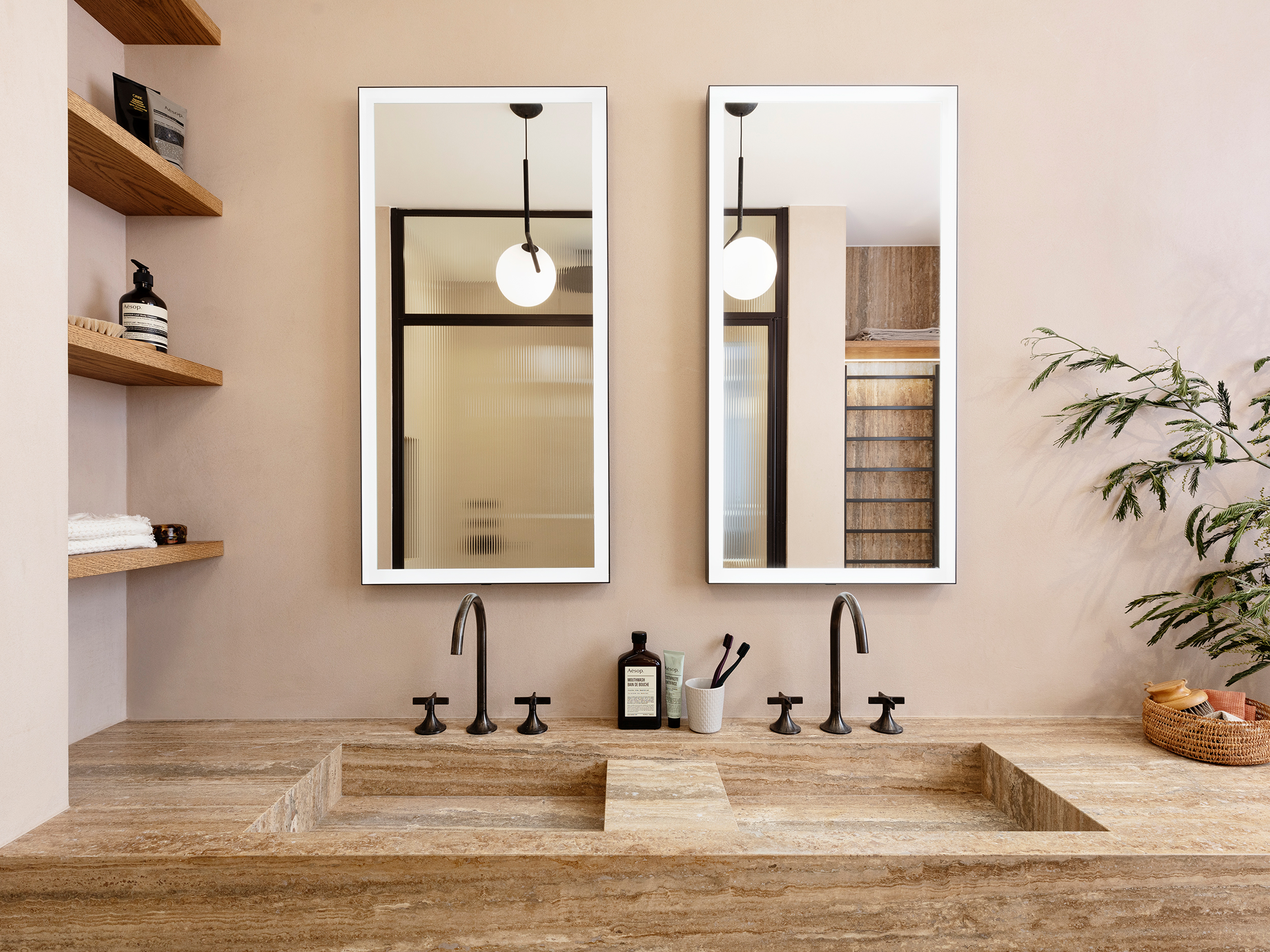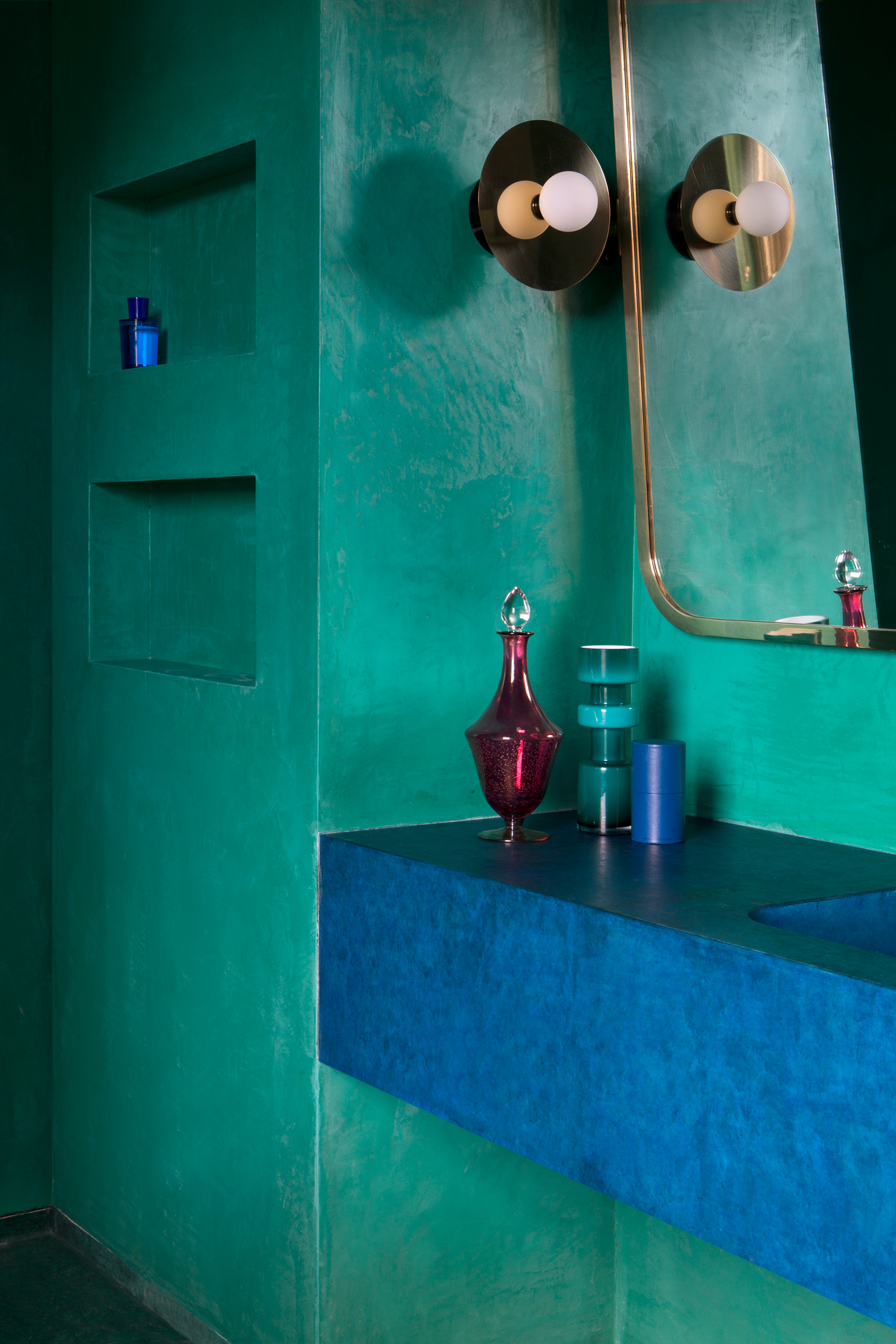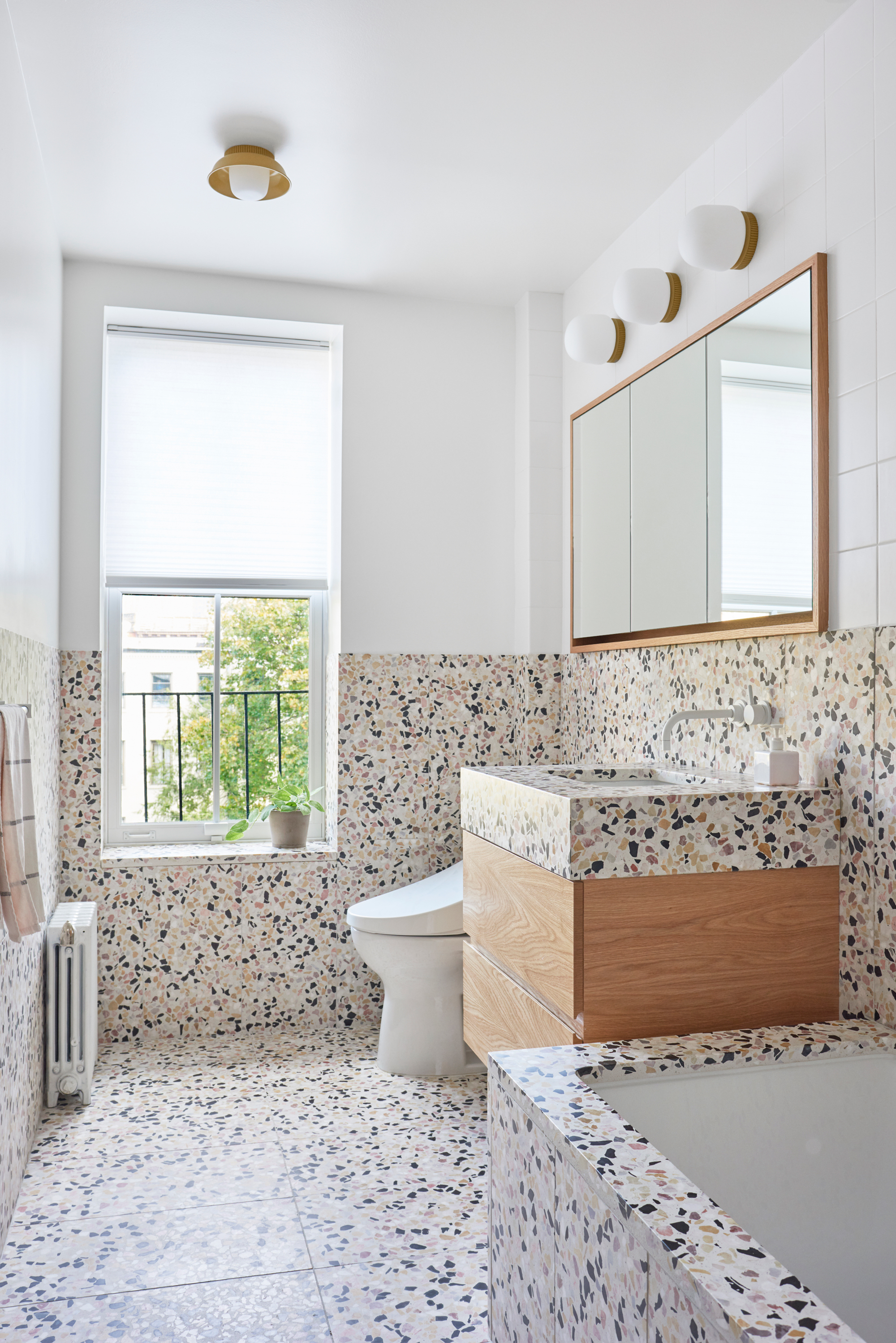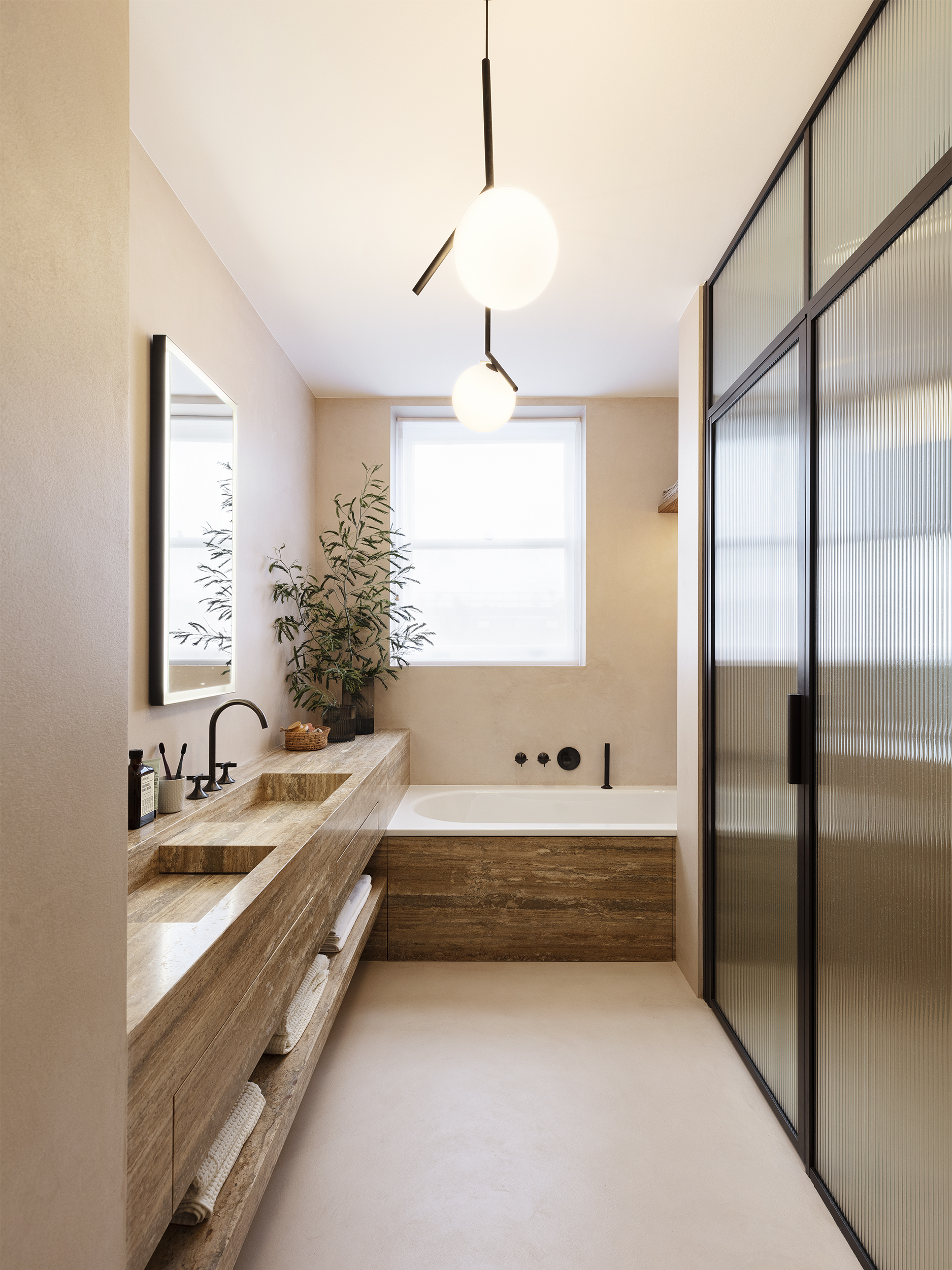Does a bathroom vanity need a backsplash? Not necessarily, say these design experts
This practical feature helps protect your walls from water damage – but does it fit in with aesthetic you want? Explore the design alternatives, here


A vanity backsplash is a practical feature that prevents water from marking the wall behind your taps and seeping down into the cabinet below. In most cases, backsplashes are built up using some form of slab that sits just behind the sink and guards the wall from splashes.
For many people re-designing a bathroom, however, there's a question mark over whether a backsplash is a necessity for the space, especially when it doesn't fit with the design they've pictured for their room.
In some cases, a bathroom backsplash really is a good idea, but depending on how often the bathroom is used, a backsplash might not be essential. 'For example, a powder room that the occasional guest uses doesn’t require a backsplash,' says Delia Kenza, director at Brooklyn-based Delia Kenza Interiors.
There are also ways to design around a backsplash, retaining that modern, minimalist quality of a backsplash-less space while keeping your walls safe from moisture. Here's what you need to know.

Rebecca is an experienced homes and property journalist, who has worked for numerous self build and interiors magazines. Here, she spoke to bathroom experts and designers to get advice on how to work around backsplashes for more minimal bathroom vanities.
What issues might you face if you don't have a backsplash?
If you have drywall, paint or wallpaper behind the vanity, splashes of water will increase your chances of developing rot, mould or mildew. Constant splashes could also lead to staining.
'Water can sometimes pool behind the taps, particularly where children and teenagers are involved – they aren’t great at cleaning up spills,' says Rob Whitaker, creative director at Claybrook. That’s why experts recommend some form of water-resistant surface, that’s easy to wipe down and keep clean.
What are the options?

If you’re keen to avoid the lipped edge that a conventional backsplash creates, there’s a plethora of ways to establish a sleek aesthetic without risking water damage to the wall behind your bathroom vanity. 'You don’t have to think of a backsplash in a traditional way,' says Becky Russell, CEO at Dublin-based Kingston Lafferty Design. 'There are many different materials and finishes you can use. They just need to be moisture resistant and waterproof.' For instance, there wouldn’t be any issues with water ingress in a fully tanked (waterproofed) wetroom.
The Livingetc newsletters are your inside source for what’s shaping interiors now - and what’s next. Discover trend forecasts, smart style ideas, and curated shopping inspiration that brings design to life. Subscribe today and stay ahead of the curve.
Selecting your sanitaryware and fittings carefully can make a big difference, too. In some scenarios, alterations can be made to your bathroom furniture as a workaround to the backsplash issue. Thinking ahead during the design phase of your bathroom means you can plan on an extension to the vanity worktop to incorporate a two or three-inch upstand.
'A mirror or mirrored wall could be used behind the vanity to add visual depth, as well as a waterproof solution,' says Rob. 'Or you can avoid a backsplash altogether by using a washstand with one already built-in.'
It's also worth avoiding shallow, round bathroom sinks if you want to forego a vanity backsplash – installing a deeper sink will help keep splashes to a minimum.
Are there any workarounds to having a backsplash?

If you don’t want to make any adjustments to your sanitaryware and fittings, there are plenty of other design options to keep your walls free from splash damage. “You could tile entire walls or create an upstand using the same material you used for the vanity worktop,” says Yoko Kloeden, creative director at London-based Yoko Kloeden Design.
For example, in Studio Nato’s renovation of this Brooklyn brownstone, colorful terrazzo tiles act as a form of wainscoting that wraps the bottom half of the space, providing a seamless finish across the sink, floor and bathtub.

'We use microcement in a lot in our projects,' says Yoko. 'It’s a mixture of cement, silica sand and resins with natural pigments. A good plasterer can apply it easily to walls, floors and moisture resistant MDFs.' As well as its aesthetic advantages, the lack of junctions in a microcement finish means no mould or mildew. Plus, it’s easy to clean.
Amos Goldreich Architecture are the brains behind the renovation of this maisonette in Chelsea, London. In the master ensuite, a seamless layer of durable microcement clads the walls and floors, resulting in a minimal yet serene aesthetic.
Tadelakt, a type of natural lime plaster indigenous to Morocco, provides an alternative to microcement. 'We work a lot with this beautiful type of lime wash plaster. It works well as a vanity backsplash alternative or for a wet room shower wall,' says Genevieve McGill, creative director at Foreign Bear Studio, an architectural and design practice based in East London.
'Another important aspect if you don’t want a backsplash is to use moisture resistant, washable paint,' says Genevieve. 'That way it can be cleaned regularly without damaging the paint colour.'

Getting creative with cladding is another way to avoid the need for a backsplash behind your vanity if you're looking to create a more minimalist bathroom. 'Using a waterproof material like shiplap paneling will give the space a unique vibe,' says Alex Epstein, lead interior designer at Annapolis-based Purple Cherry Architects. 'This can give the space a low-country or coastal feel.'
The conversion and restoration of this gin distillery required some clever design work, as the unusual dimensions of the bathroom meant that installing a conventional backsplash wasn’t possible.
'We wanted the effect of wooden paneling throughout the room to make it feel more homely and soft,' says Leo Wood, interior designer and company director at London-based Kinder Design. 'The effect of this was that the edges of the wood did go slightly dark, but that was nothing that a quick repaint every couple of years couldn’t mask. For us, going without a backsplash was a much better choice for the room overall.'

After starting my journalism career at a luxury property magazine in Bangkok, I re-located to London where I started out as a sub-editor and features writer. I later became the features editor of a popular self-build and renovation magazine, where I delved into the world of structural systems, eco tech and smart homes. I went freelance in 2017 to pursue my dream of becoming a yoga teacher, but I still write for numerous titles in the homes and interiors sector, including Grand Designs, Ideal Home, Livingetc, Homebuilding & Renovating and Build It. I write a range of articles, from design-focused features to real life case studies.